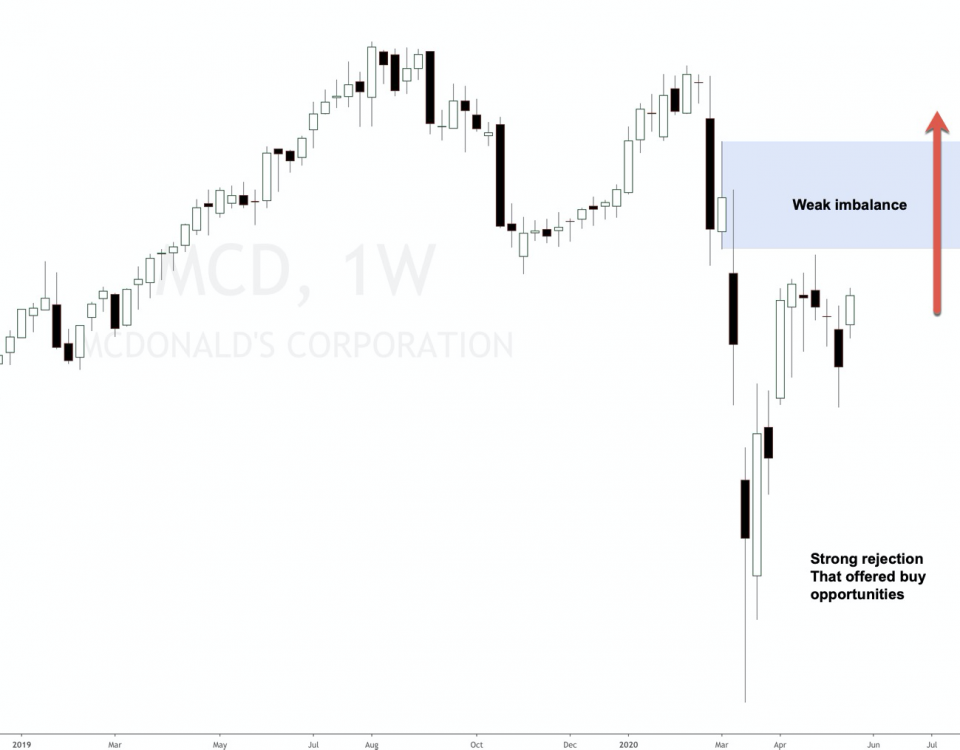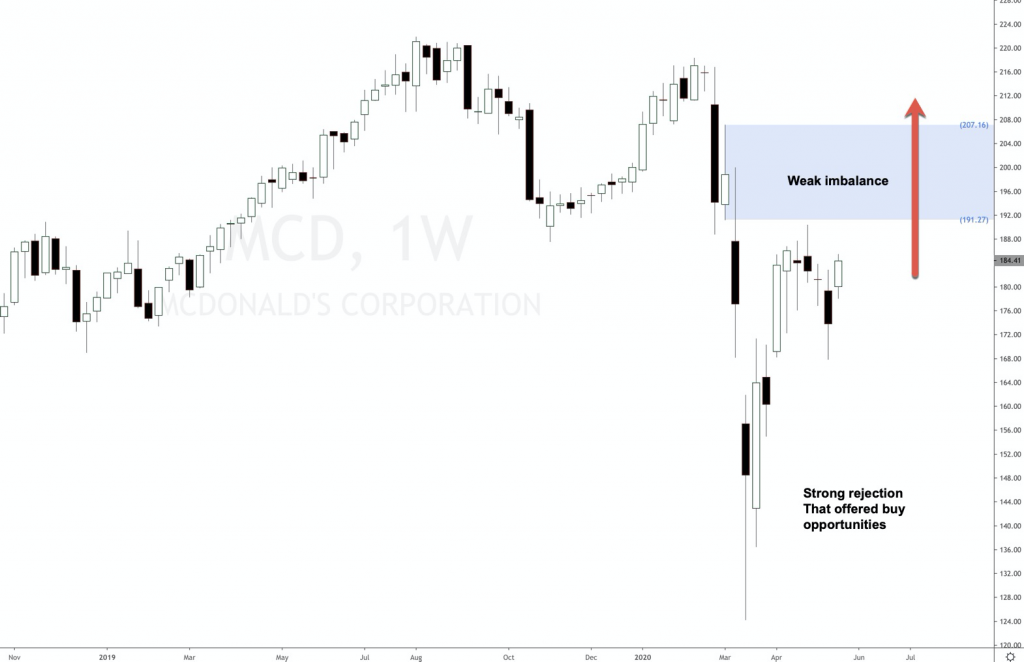25 May

McDonald’s Corporation operates and franchises McDonald’s restaurants in the United States and internationally. Its restaurants offer various food products, beverages, and a breakfast menu. Expecting the elimination of the weak tested weekly supply imbalance.
McDonald stock price forecast
McDonald’s (NYSE: MCD) weekly timeframe price action and supply and demand analysis tell us a few things. The coronavirus covid-19 pandemic helped the stock price drop to price levels that have not been visited since 2016, dropping about 43%. The sell-off stopped at $124 per share last 18th March 2020 and since then McDonald’s stock has been rallying with only a small retracement last 27th March 2020.

McDonald’s price action
Bearish price action created on the way down is pretty weak, we are expecting McDonald’s stock to rally much higher and eliminated weak supply imbalance in the weekly timeframe. If we look back, the rearview mirror shows that McDonald’s weathered the 2008-2009 crisis like a champion. Price action tells us that the stock will weather the coronavirus crisis the same way it did back in 2008 by eliminating a weak level of around $191.
McDonald’s trend imbalances
McDonald’s fast-food giant’s 2.8% yield isn’t setting any records. Even during the pandemic, shares have managed to hold up all right as its drive-thru business, and high-quality, financially sound franchisees give shares some resiliency.
There will be buying opportunities at McDonald’s for short-term and long-term stock traders. Intraday stock traders have seen a few trading opportunities on McDonald’s on the way up, and there will be more buying opportunities as the price keeps moving further north.
You can use these imbalances in McDonald’s stock to plan your trades in lower timeframes. Trading is just waiting for the right trigger points and scenarios to present themselves, this game has got a name, and it’s called the waiting game. We must patiently wait for the correct scenarios and setups to happen and for the price to pull back or dip into the price levels we want to trade. In our case, these price levels are made of supply and demand imbalances.
Join our supply and demand stock trading course to learn how to trade using our supply and demand trading strategy.
There are several ways of buying stocks and futures. When trading stocks, you can buy shares of the underlying stock or use options strategies to go long or short at these specific supply and demand levels, long calls or long puts or spreads. You can even buy a CFD (contracts for difference) if you are in a country where it’s allowed.





